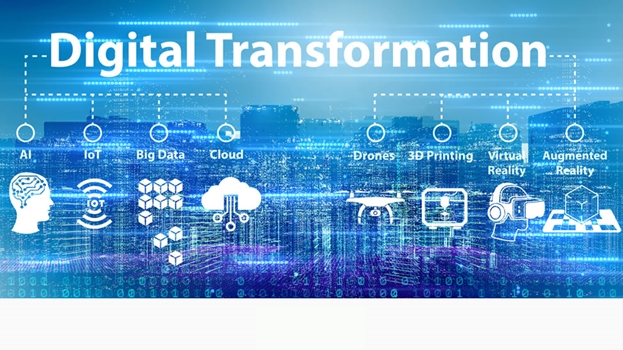In this article, we discussed the meaning of transformation methodology, the types, the examples, the features, the factors and benefits.
Definition
A “transformation methodology” refers to a structured approach or set of steps used to guide a significant change or “transformation” within an organization, often involving changes to processes, culture, technology, or strategy, with the aim of improving performance and adapting to new circumstances; it essentially outlines the process for managing and implementing a major organizational shift.
The Features of a transformation methodology:
Leadership and Vision:
Appointing dedicated transformation leaders to guide the process, set clear goals, and communicate the vision to all levels within the organization.
Assessment and Analysis:
Conducting a thorough evaluation of the current state to identify areas for improvement, pain points, and opportunities for change.
Strategic Planning:
Developing a detailed roadmap outlining the transformation objectives, timelines, key milestones, and necessary resources.
Stakeholder Engagement:
Actively involving key stakeholders throughout the process to ensure buy-in, address concerns, and gather valuable feedback.
Change Management:
Implementing structured change management practices to minimize disruption, support employee adoption, and address resistance to change.
Process Improvement:
Identifying and optimizing existing business processes to enhance efficiency and effectiveness.
Technology Enablement:
Leveraging technology solutions to support the transformation, including automation, data analytics, and new systems.
Communication and Training:
Providing clear and consistent communication to all employees regarding the transformation goals, progress, and necessary training to adapt to new processes.
Measurement and Evaluation:
Establishing metrics to track progress, assess the impact of transformation initiatives, and make necessary adjustments.
The Types of Transformation Methodology
Process Transformation:
Focuses on optimizing existing business processes by streamlining workflows and utilizing new digital tools to improve efficiency.
Business Model Transformation:
A more fundamental change, rethinking how a company creates and delivers value to customers, often involving new revenue models or market strategies.
Cultural Transformation:
Aims to change employee behaviors, attitudes, and leadership styles to align with the new strategic direction.
Domain Transformation:
Expanding into a new market or significantly altering the core business area, like a retailer venturing into cloud services.
Digital Transformation:
Integrating digital technologies across all aspects of a business, including customer interactions, operations, and internal processes.
Examples of transformation methodologies include:
Digital Transformation:
Leveraging digital technologies to fundamentally change how a business operates, often involving automation, data analytics, and cloud computing to enhance customer experience and efficiency.
Organizational Transformation:
Redefining the structure and governance of a company, including roles, responsibilities, and department organization, to better respond to new challenges.
Business Process Transformation:
Streamlining and improving internal processes by identifying inefficiencies and implementing new technologies to reduce costs and improve productivity.
Strategic Transformation:
Reorienting a company’s focus towards new market segments, customer needs, or growth opportunities, potentially involving diversification or international expansion.
Change Management:
Managing the human aspect of transformation by addressing employee concerns, providing training, and facilitating the transition to new practices.
Factors Contributing to a Successful Transformation Methodology include:
Leadership and Vision:
Strong leadership with a clear vision for the transformation is crucial to guide the organization through change and motivate employees to embrace new approaches.
Stakeholder Engagement:
Actively involving all relevant stakeholders, including employees, customers, and partners, to ensure buy-in and address concerns throughout the transformation process.
Change Management:
Implementing structured change management practices to minimize disruption and resistance to change, including proper communication and training.
Culture Transformation:
Fostering a culture that embraces innovation and adaptability to support the transformation goals.
Data Analysis:
Utilizing data to inform decision-making, track progress, and identify areas for improvement throughout the transformation.
Communication Strategy:
Clear and consistent communication to all levels of the organization regarding the transformation goals, progress, and potential impacts.
Project Management:
Establishing a structured project plan with defined timelines, milestones, and accountability to ensure efficient execution.
Continuous Improvement:
Incorporating feedback loops to continuously refine processes and adapt to changing needs during and after the transformation.
A Transformation Methodology provides several Benefits to an Organization, including:
Improved Operational Efficiency:
Streamlining processes and eliminating redundancies can lead to significant cost savings and increased productivity.
Enhanced Customer Focus:
By prioritizing customer needs and feedback, transformation methodologies can lead to better product/service quality and customer satisfaction.
Increased Agility:
Adapting to market changes quickly by embracing innovation and flexible practices.
Data-Driven Decision Making:
Utilizing data analytics to identify areas for improvement and make informed decisions.
Stronger Culture of Change:
Fostering a culture that embraces change and continuous improvement.
Aligned Strategy and Execution:
Ensuring all organizational levels are working towards the same strategic goals.
Reduced Risk:
Proactive identification and mitigation of potential risks associated with change.
Employee Engagement:
Involving employees in the transformation process can lead to increased motivation and commitment.
Improved Innovation:
Creating an environment that encourages creative thinking and new ideas.
Enhanced Market Competitiveness:
Staying ahead of the curve by adapting to industry trends and emerging technologies.
Conclusion
A transformation methodology refers to a structured approach for guiding an organization through significant change, typically involving a set of steps to analyze the current state, define a desired future state, and implement changes to bridge the gap, often focusing on improving business operations, adapting to new technologies, or addressing market shifts, while managing stakeholder engagement and minimizing disruption throughout the process; key aspects include defining a clear vision, assessing current capabilities, developing a strategic roadmap, implementing changes, and monitoring progress to achieve desired outcomes.


